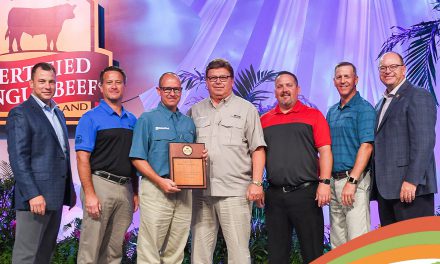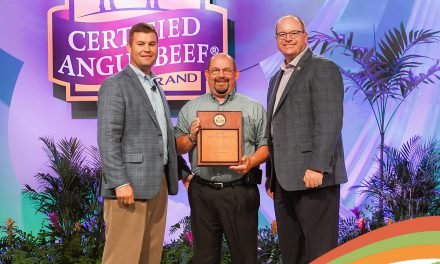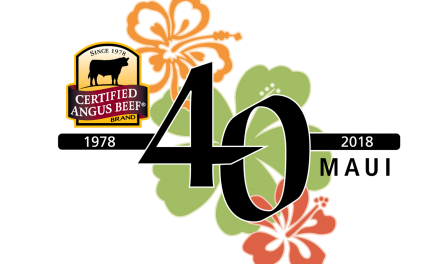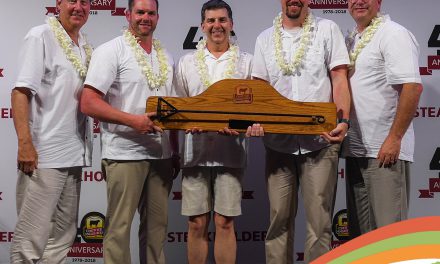by Miranda Reiman
When Steve Knoll went to buy a few Angus bulls to put on his registered Salers herd, it changed everything. “I was blown away with what the bulls were bringing. The bulls I thought I would just go and buy and bring home, I couldn’t afford,” says the Hereford, Texas, rancher. Instead, his trailer carried two registered Angus cow-calf pairs. One nursing a heifer, the other, a bull. With one flush, he’d start his embryo transfer program. Today, it’s still about 75% embryo transfer and 25% artificial insemination. “My dad always told me to just make do with what you’ve got. That’s kind of what we’ve been doing ever since,” Knoll says. It’s been more than two decades now, and “making do” means growing into a program sought after by large commercial ranchers who want high-performance genetics that work back at the ranch, too.
Steve and Laura Knoll’s focus on quality earned their 2 Bar Angus business the Certified Angus Beef®(CAB®) brand’s 2018 Seedstock Commitment to Excellence Award. The couple accepted the honors during the brand’s annual conference Sept. 28 in Maui, Hawaii. Back home, repeat buyers depend on functionality. “Most of them have been here generation after generation, and they make a living off of these cattle,” Knoll says. “They’ve got to have a calf every year. “Then if you can add these other bells and whistles, like a little more growth and maybe a little more marbling—that’s more money they can put in their pocket, pay their bills to keep their place,” he says. The bulls in their March catalog had an average marbling expected progeny difference (EPD) of 0.93, compared to a breed average of 0.53. “Cattle that marble don’t cost any more to have in your herd,” Knoll says.
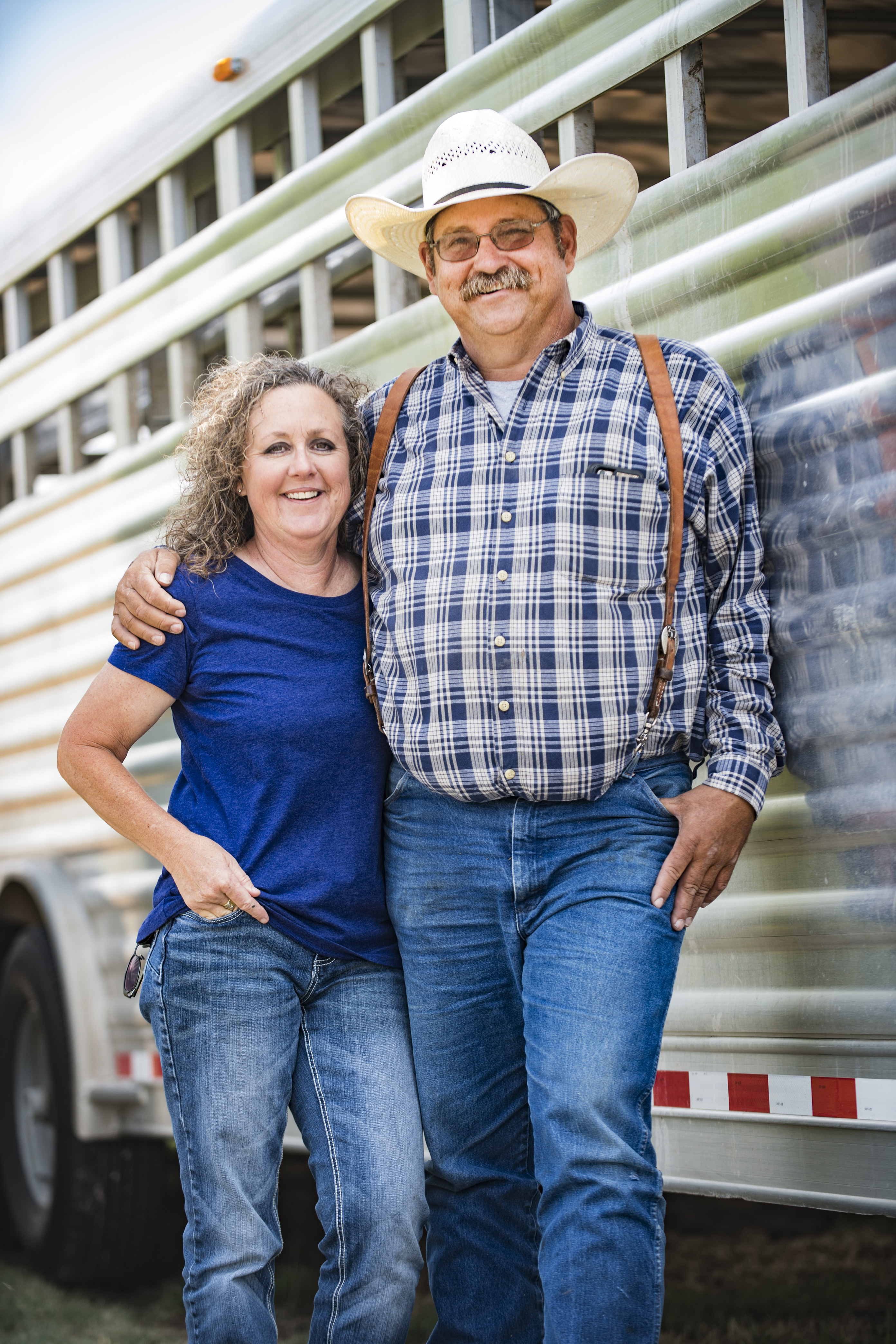
Born and raised a Texas ranch kid, he took his degree from then-West Texas State University in Canyon to work for Cactus Feeders. “I was getting to see enough of the information that I knew there was a difference in cattle that would yield and cattle that would grade,” he says. In between the seven years at Cactus and that Angus bull sale, Knoll married Laura, moved to Hereford, began running Salers cows on his in-laws’ land and got a job in maintenance at a local feed plant. “It was pretty much eight hours of work in town and then eight to ten hours of work at home, then get a nap and go back,” he says. The couple welcomed firstborn Wesley into the world and Knoll went to full-time ranching all in the same year. They switched to Angus the next breeding season. “You kiss your income and your insurance goodbye, and my bet was I had to generate stuff to cover that,” he says.
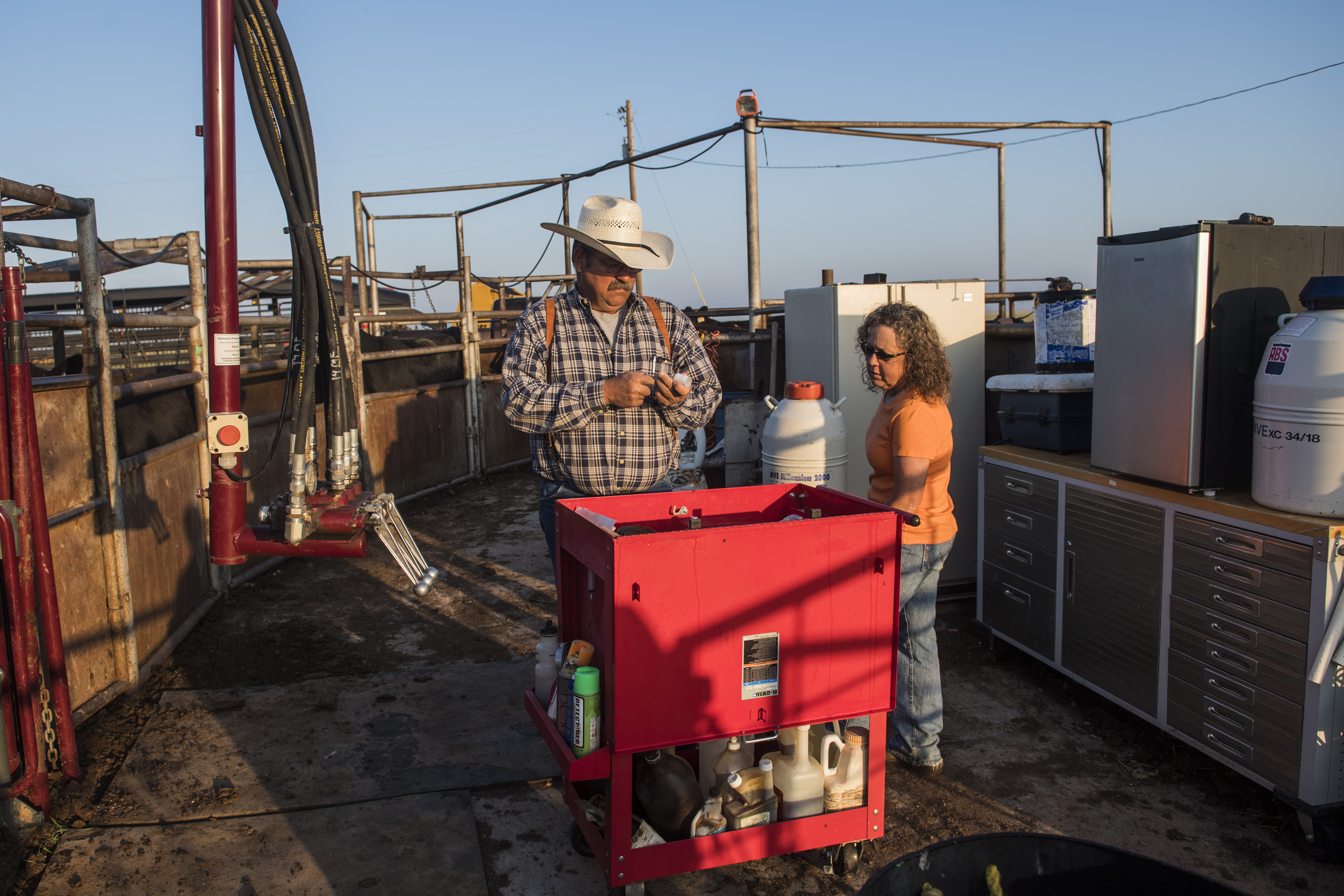
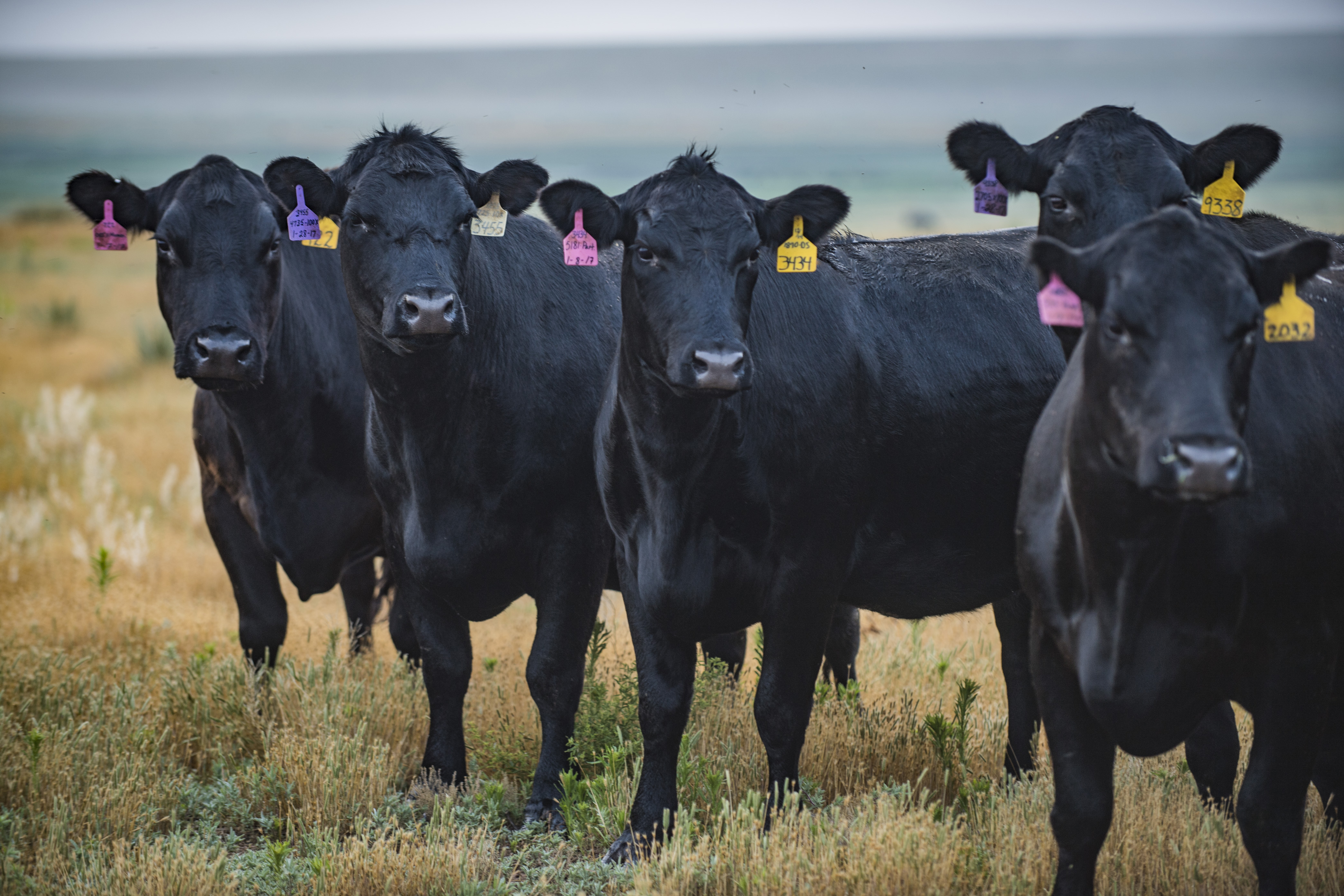
Today, Wesley, 24, works full-time on the ranch. Joe, 18, and twin daughters Anita and Marie, 17, fill syringes, gather cattle and record numbers. A licensed pharmacist, Laura traded her first career away in 2005. “I decided I kind of liked this business better,” she says. Having HD50K DNA-tested bulls that can handle the heat, mesquite and wind is part of the draw for customers. The other part? “I believe whenever they bought that bull from me, they paid a membership to get their cows bred. Whatever’s got to happen for them to get their cows bred, we’re going to try to do,” Knoll says. Last fall, CAB started a “Targeting the Brand” incentive program to encourage Angus producers to use that trademark to identify bulls more likely to improve CAB qualifiers in a herd. Cattle must meet minimum requirements for grid value ($G) and marbling before the mark can appear next to specific animals in the catalog. Out of 117 bulls in their sale, 97% qualified for that logo—the highest of any breeder using it.
That tells a story, says Kara Lee, CAB production brand manager. “It may be the first year we’ve been asking them to put a logo in the catalog, but it’s not the first year they’ve been emphasizing quality,” she says. Jim and Lucy McGowan run cattle between Paducah and Childress, and wean calves on farm ground near Hereford. “I was actually Steve’s first customer,” Jim McGowan says. “We select for dollar-B ($B), but also conformation of the bull. I go pretty heavy on EPDs, but I like the bull to be good looking also.” Last year’s calves sold after weaning and the feeder who bought them shared a closeout showing 41% Prime. “If you’re not improving, then you’re backing up, because everyone around you is improving,” Knoll says. Cow lessons seamlessly transfer into life lessons. Knoll often says raising cattle and raising kids go together. “I hope the kids take away that when you’re responsible for something, you don’t walk away from it. Good intentions are one thing, but you’ve got to figure out a way to make everything work,” he says. “We were only able to be where we are today because of the Lord’s blessings we’ve received.”


